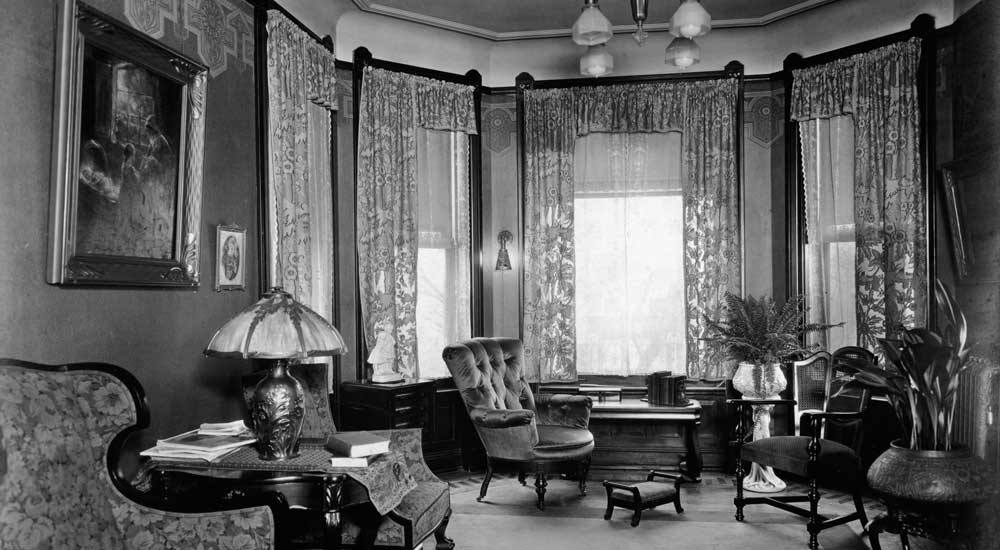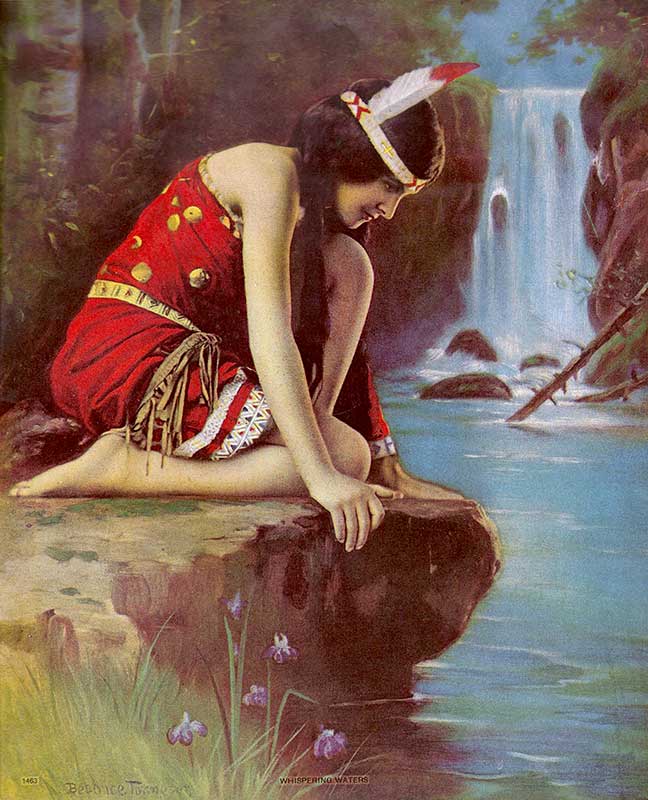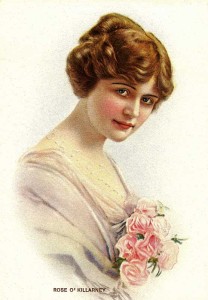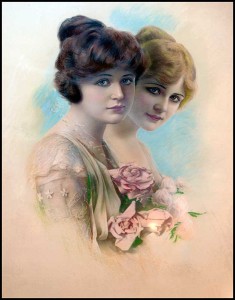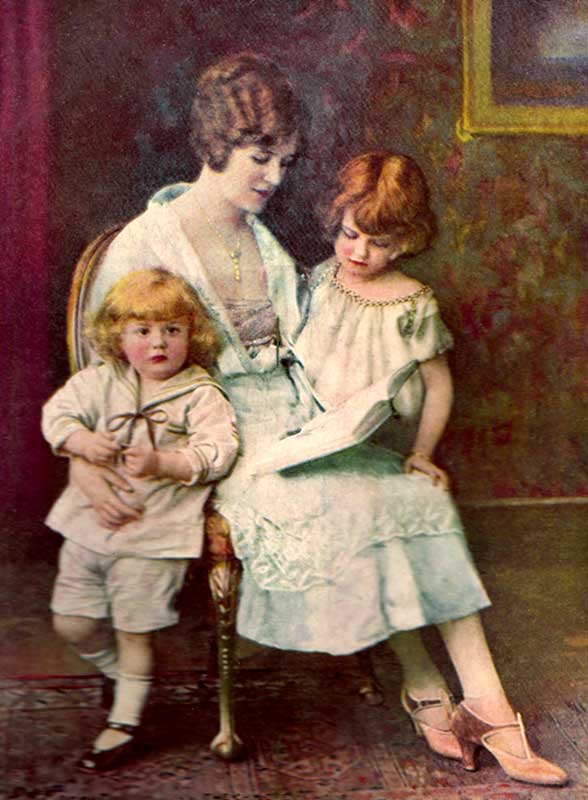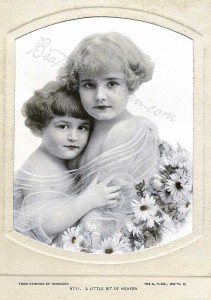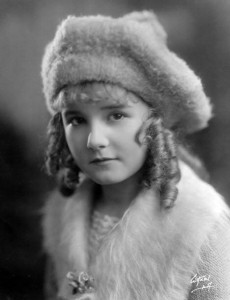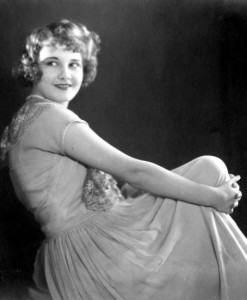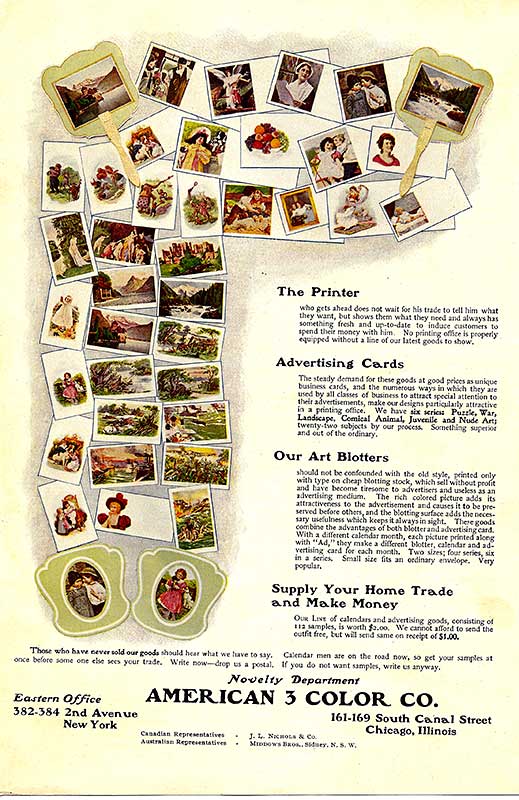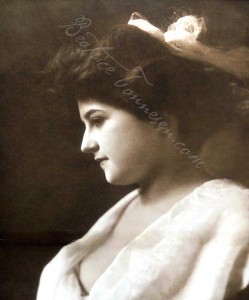Author Archives: Lois
Separation Anxiety: TDM’s “Rose O’Killarney” Has Me Wondering!
In February 2009, I proudly posted an image of one of my most prized possessions, an original pastel and watercolor portrait of two beautiful women, painted from a photo by Beatrice Tonnesen. The painting had been found in the archives of the now-defunct Thomas D. Murphy Calendar Co., of Red Oak, Iowa. There was a bit of mystery attached to my treasure because in almost thirty years of collecting vintage calendars, I could not remember ever having seen a published print of this duo. Did TDM really purchase this gorgeous painting, never to use it? [Click on images for larger version.]
Now, however, I have an answer of sorts, but it raises other questions. I recently found a 1919 calendar with a print of one beautiful woman – not two – and the woman is clearly the same one who appears on the right side of the original painting. Titled “Rose O’Killarney,” her solo calendar appearance matches every detail shown in the painting, right down to the green sprigs peeking out of her rose bouquet. Interestingly, since in the painting she was partially obscured on the left by her companion, the calendar illustrator had to fill in some missing areas when the two subjects were separated. But wait! Could it be that the painting was formed and painted from two separate photos, with “Rose O’Killarney” being one of them? In that case, the calendar illustrator would have had a complete photographic image of Rose with which to work.
So now, I wonder, is there a calendar print of Rose’s friend out there somewhere? Or is there a calendar somewhere that shows the two beauties reunited? Did TDM get two, or even three, calendar prints for the price of one painting? Or did they, perhaps, purchase two separate photos from Tonnesen, and then position and illustrate them together for the painting?
Included here, are images of the original painting, along with the calendar print of “Rose O’Killarney.” For more examples of curiously constructed prints with elements by Tonnesen, please see Album 12, “Tonnesen Images Make Mystery Appearances” in the Beatrice Tonnesen Catalogue.
Copyright 2014 Lois Emerson
R.A. Fox Painted his “Children’s Hour” from Photo by Tonnesen
During the 1920’s, famed calendar artist R. Atkinson Fox (1860-1935) shared Beatrice Tonnesen’s Chicago studio. Fox is known to have painted from some of Tonnesen’s photos, and a photo found at the Winneconne (WI) Historical Society appears to be a companion to the source photo for Fox’s “The Children’s Hour”, which is signed with Fox’s pseudonym “DeForest.”
Around 1923, Tonnesen created a photo portraying a beautiful young mother reading to her two children. The scene went on to become an unsigned calendar print titled “The Morning Lesson.” “The Children’s Hour” is a variation on “The Morning Lesson” – same people, same clothing, same theme – only a different placement of the people in the room and different coloring and illustrated backgrounds. So it’s likely that both source photos were the products of the same photo shoot.
Even without seeing the Winneconne photo, it is clear that “The Children’s Hour” originated in Tonnesen’s studio. The chair and rug appear often in photos confirmed to be by Tonnesen. The accompanying slideshow features “The Children’s Hour”, in which “Mom” sits in the middle, between the children, followed by the original photo found at Winneconne, in which “Mom” sits on the left, and “The Morning Lesson,” which came from the Winneconne photo, and may or may not have been illustrated by R. Atkinson Fox. Other prints by R.A. Fox that are known to have originated as photos by Tonnesen are “The Barefoot Boy” (See Album 1 in the catalog) and “The Glory of Youth” (Use the search box on the right side of this page.)
Copyright 2014 Lois Emerson
Was this Tragic Silent Film Star a Tonnesen Model?
[Click on each image for a larger version.]
Chicago Daily Tribune archives have been very helpful in my efforts to find and identify the people who modeled for Beatrice Tonnesen’s photographic art. Using the search term “child model,” I recently discovered Lucille Ricksen (1910-1925), a Chicago-born model/actress who moved to Los Angeles in 1920, began playing adult parts around 1923, and died shockingly in 1925. A Google search on “Lucille Ricksen” yielded scores of sites that feature her biography, her photos or both. Some of the early photos of Lucille reminded me of a child I’d seen in an image by Tonnesen, so I dug a little deeper.
From online sources, primarily Wikipedia, I learned that Lucille was born Ingeborg Myrtle Elisabeth Ericksen, to Samuel and Ingeborg Ericksen in Chicago in 1910. Reportedly, she began modeling at age 4, joining the Chicago-based Essanay (silent film) Studio at around age 5 and, at some point, changing her name to Lucille Ricksen. Essanay began to shift production to California during the 1910’s, and Lucille’s mother took her to Los Angeles in 1920, where she worked in movies produced by Samuel Goldwyn, later Metro-Goldwyn-Mayer, and others. Wikipedia lists 36 films, some of them shorts, in which Lucille appeared in the five years between her arrival in Hollywood and her death there in March of 1925. Several months before her death, Lucille became too ill to work and was ordered to bed by her doctor. Her mother, who maintained a vigil by her bedside, collapsed and died in Lucille’s arms, only weeks before Lucille herself died! The most frequently reported cause of Lucille’s death was tuberculosis, but other sources suggest overwork and/or complications from an abortion.
Continue reading
Advertising Fans: Popular Collectibles Feature Art by Tonnesen
Continue reading
Meet “Olive” – Tonnesen’s Surprisingly Racy 1910 Calendar Girl
As detailed in my e-book, The Secret Source, Beatrice Tonnesen appears to have produced little, if any, new calendar art between around 1904, when she abruptly closed the Tonnesen Sisters Studio on Michigan Avenue, and around 1913, when she opened the new Tonnesen Studio on West Chicago Avenue. So imagine my surprise when I found the provocative “Olive” (included), complete with a glowing writeup, inside the Thomas D. Murphy Company’s book of calendar art samples for 1910. Copyrighted by TDM in 1908, the photo print, which occupies an entire double-page spread in the book, was offered only as a black and white, 8 X 10.5 inch image on a super-sized (14 X 22 inch) roll-up calendar.
Continue reading
